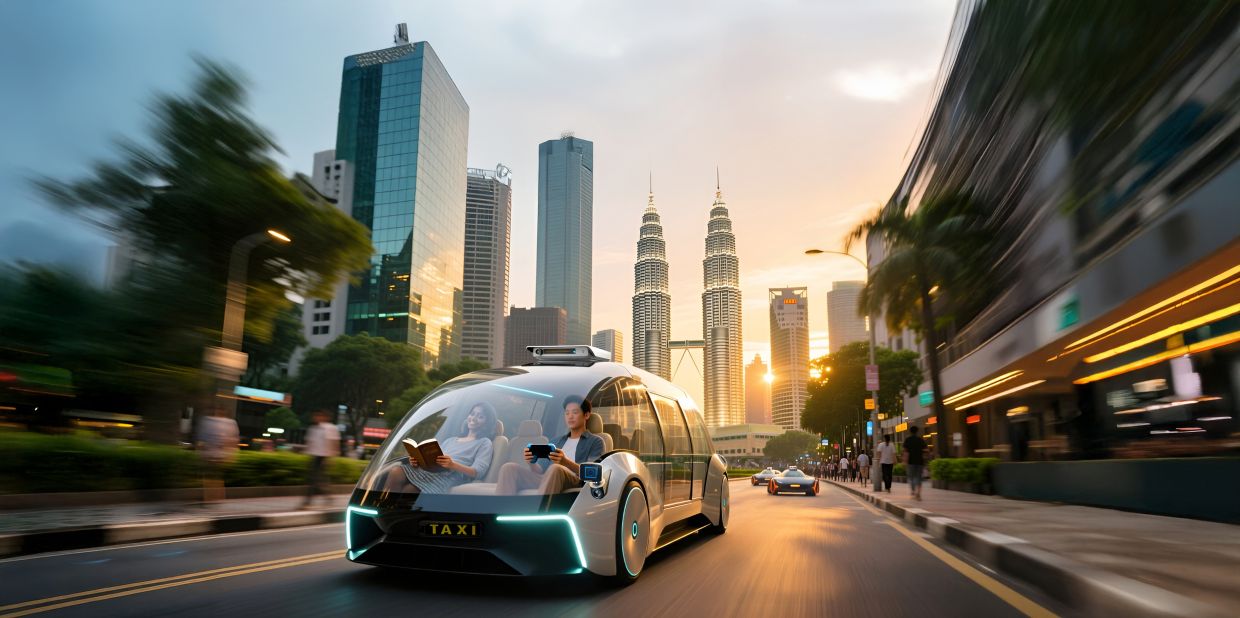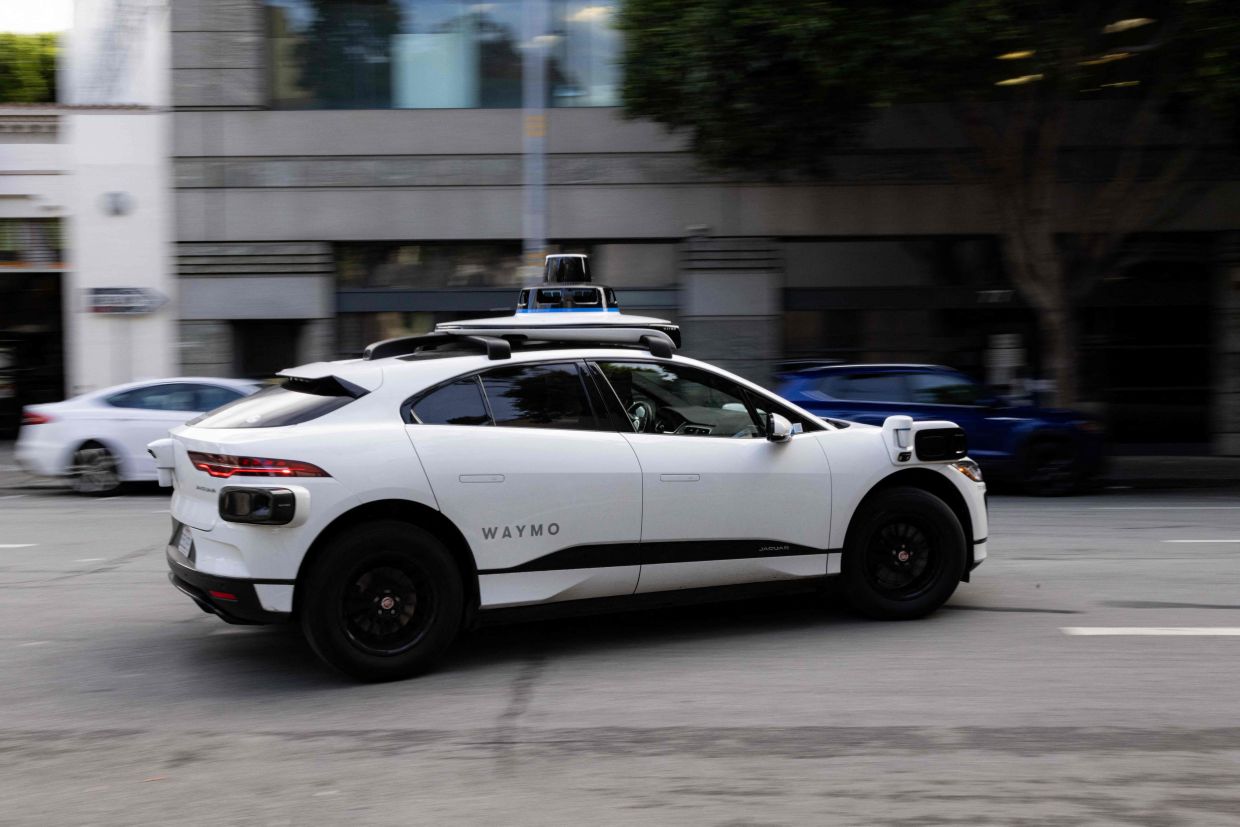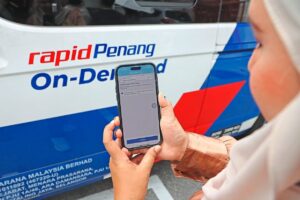Ever fancied having a robotaxi drive you wherever you need to go while you snooze, read, play games or catch up on emails?
What seemed like a fanciful far-off notion might be edging closer to reality, as Digital Minister Gobind Singh Deo says in a report from September that his ministry has engaged the Road Transport Department (JPJ) on forming safety regulations and a legal framework to govern autonomous vehicles (AV).
While opinions differ on whether the prospect of driverless cars zooming around Malaysian roads is a positive or negative development, questions remain on whether the country is ready, and more importantly, if the technology is truly safe.
Earlier this year, the Los Angeles Times reported an incident in Arizona where a Waymo vehicle drove in circles with a passenger on the way to an airport, while the New York Post reported another case in Texas where a Waymo stopped on a highway and locked its passengers inside.
While there are valid concerns to be had with autonomous vehicles in their current state, others believe that there are some real substantial benefits to be gained from their eventual widespread deployment, particularly in safety.
A report titled “Hands Off – The Safety Promise of Autonomous Driving” published last month, from motor insurance-provider Allianz, predicts a drop of 20% in traffic accidents in Europe by 2035, rising to over 50% in 2060, with a growth in autonomous vehicle use.
The study further cites statistics from the US National Highway Traffic Safety Administration, which state that 90% to 95% of road accidents are due to human error. This could be in the form of fatigue, distractions, or misjudgement.
With that in mind, the Allianz report says that autonomous driving stands to play a pivotal role in safety, especially since these systems are designed specifically to avoid such mistakes.
The Allianz study also draws from a selection of 50 other international publications and accident datasets, finding that autonomous systems outperform humans in safety across the board.
This includes a reduction by up to 85% in rear-end collisions, lane departures and intersection error, along with figures from robotaxi-provider Waymo studies claiming a 96% reduction in accidents at intersections resulting in injury for passengers aboard its autonomous vehicles.
What is autonomous driving?
According to the Allianz report, the Society of Automotive Engineers (SAE) provides the most widely accepted classification of driving automation. This framework defines six levels, from Level 0, which involves no automation, to Level 5, where a vehicle can perform the entire driving task in all conditions. Humans would no longer be drivers but passengers, free to pursue other activities.
Today’s autonomous shuttles and robotaxis (rather than private passenger cars) typically feature Level 4 automation. This means a Level 4 vehicle can manage the entire driving task within specific parameters – for example, in defined urban areas, on certain highways or under favourable weather conditions.
Meanwhile, prototypes of Level 5 automation – vehicles capable of driving themselves under all conditions without human input – have been demonstrated in controlled settings. However, the report goes on to state that none are currently legally or technically available for use on public roads.
Early days
Experts say Malaysia already has the foundation to support an eventual rollout of autonomous vehicles, though there is still a lot that needs to be done.
For Dr Azree Nazri, head of laboratory at Universiti Putra Malaysia’s (UPM) Institute of Mathematical Research, there are still gaps and blind spots that need to be addressed before the country is ready to achieve widespread adoption.
“Malaysia faces several challenges in ensuring a safe rollout of autonomous vehicles. Inconsistent 5G coverage disrupts vehicle-to-infrastructure communication, while mixed traffic conditions – motorcycles, pedestrians, and erratic driving –complicate AI decision-making.
“Nationwide 5G connectivity must be strengthened to ensure reliable V2X (vehicle-to-every-thing) communication,” he says.
Azree says that autonomous vehicles can still function without 5G, but performance depends on how they’re built. AV manufacturers that use an edge-based system – meaning its software is installed directly in the car – can operate even without 5G, though functions like cloud updates and map syncing will pause.
On the other hand, manufacturers that use cloud-based systems rely heavily on 5G for real-time coordination, high-definition map updates, and remote control. He explains that without 5G coverage, an edge-based system AV would keep driving with slightly reduced optimisation, while a cloud-based system vehicle would lose key functions or switch to a limited autonomous mode.
“In a limited autonomous mode, the vehicle still operates on its own but with reduced capability – it may slow down, restrict certain manoeuvres, or request intervention depending on its automation level. This usually corresponds to Level 3 (Conditional Automation), where the car can drive itself under specific conditions but still requires a human (or remote operator) to take over if those conditions change,” he says.
The human element
For those like Kuala Lumpur-based marketing manager Clarissa Loi, the idea of cars going around without a human driver feels more frightening than exciting, despite how futuristic the technology may seem.
“My sentiment on them isn’t very positive – while the notion of autonomous vehicles is very novel, I feel like they are more known for the mishaps rather than convenience,” she says.
However, a report from NBC published in October last year found that women are steadily growing to prefer autonomous options over traditional e-hailing offerings.
Those interviewed for the story say this is mainly due to concerns over their personal safety when sharing space with a human driver, who are essentially strangers, making autonomous vehicles a far more attractive option.
It goes on to say that while US e-hailing providers Lyft and Uber report that safety violations (such as fatal crashes and physical assault, along with sexual assault) are rare with one case for every 500,000 rides, frequent female e-hailing passengers are not keen on testing their luck.
Some also worry that the figures reported by the e-hailing companies do not account for other actions by drivers, such as unwanted flirting and prying questions, which have left some women feeling unsafe and nervous when using such services.
These factors have led to a rise in preference towards robotaxis, with Waymo head of product and customer research, Megan Neese, saying that while men had been early adopters of the service, women are now signing up and using them at the same rate.
The deployment of autonomous vehicles in the form of robotaxis could also help address growing societal needs. For instance, Nissan announced plans last year to launch a ride-sharing service targeted at senior citizens in Yokohama, Japan.
Citing a rapidly greying population and acute shortage of taxi drivers, Nissan intends for the programme to be up and running for passengers by 2027, following a trial run of 20 vehicles with a safety monitor in the Yokohama Minato Mirai area.
Local focus
On the home front, the Asia Pacific University of Technology and Innovation chief innovation and enterprise officer, Prof Dr Vinesh Thiruchelvam, points out that the focus in Malaysia has mainly been on electric vehicles, and that the infrastructure for autonomous vehicles will be a big undertaking.
“Infrastructure will require substantial capital and investments as we are now in a test model stage, and scaling to country-wide deployment will need dedicated lanes for self-driving vehicles, data storage facilities and enhanced charging systems,” he says.
A widespread deployment would also need the autonomous systems to be mature enough to reliably navigate across the various road conditions in Malaysia, says Prof Vinesh.
Dr Susilawati Susilawati, a senior lecturer at Monash University Malaysia’s School of Engineering, further highlights that existing AVs systems are largely trained abroad, which may pose a challenge in adapting the technology to Malaysia, due to the differing road and weather conditions.
For instance, the heavy tropical rain faced by vehicles locally is not the same as what is faced in the US and Western European countries, which may “blind” the cameras and disrupt the lidar sensors the AVs depend on for navigation.
According to Assoc Prof Dr Vimal Rau Aparow from the Taylor’s University School of Engineering, Malaysia could take cues from international best practices when developing its roadmap for autonomous vehicle regulation and deployment.
“The first step for Malaysia should be to establish comprehensive AV regulations. Regulations are essential to ensure safety, encourage innovation, support economic growth, and build public trust.
“They must address risk management, legal and ethical considerations, and provide flexibility for continuous technological advancement. A dedicated advisory committee should be established, comprising representatives from government authorities, industry, and academia.
“This multidisciplinary group would be responsible for developing Malaysia’s AV regulations and safety testing frameworks tailored to local road and traffic conditions,” he says.
Similarly, Malaysian Cyber Consumer Association (MCCA) president Siraj Jalil believes that any local legislation or deployment needs to be supported by international safety standards and be subject to independent audits in order to reassure consumers and build confidence.
These include cybersecurity and AI ethics audits overseen by the National Cyber Security Agency and Sirim, as well as the adoption of “Data Protection by Design” principles to ensure that visual, location, and user data comply with the Personal Data Protection Act 2010 (PDPA) and the Cyber Security Act 2024.
Data Protection by Design refers to autonomous vehicles and robotaxi systems being designed to prioritise user privacy and cybersecurity from the get go, rather than being retroactively added later.
Who is at fault in a crash?
One point the experts consistently stress on is accountability. Specifically, who should be held responsible if a driverless car or robotaxi is involved in an accident.
Siraj says these liabilities need to be clearly defined to protect consumers and ensure public trust.
“In the event of an accident or malfunction caused by an autonomous system, the burden of responsibility should not fall solely on the owner or user of the vehicle.
“Accountability should be shared between the manufacturer (manufacturer liability), software developer (algorithmic accountability), and service provider (operational liability),” he says.
Susilawati voices similar concerns, especially for ehailing passengers.
“The absence of a human driver also introduces new variables and uncertainties, creating challenges in determining liability and ensuring safety. These can be mitigated by mandatory remote operators for early phases and robust emergency procedures.
However she believes “AVs can also reduce human errors, reduce traffic accidents and result in smoother traffic conditions”.
Azree also points out the need to have clearly outlined liability for any future adoption of AV technology, alongside other measures to ensure a safe rollout.
He points out that researchers in the US have proposed introducing a white traffic light system dedicated to AV coordination, but that the system requires the costly replacement of every three-lamp traffic light nationwide.
Azree adds that UPM is developing a similar traffic light system designed for roads shared between AVs and human drivers, where all three colours – red, green, and yellow – are lit up simultaneously to alert humans of the presence of a driverless vehicle so they can coordinate appropriately. This system would be more cost-efficient, he says, as it will not require existing traffic lights to be replaced.
One unexpected benefit of autonomous vehicles may come in the form of lower motor insurance premiums, with Allianz SE management board member Dr Klaus-Peter Rohler saying in a press release that it would transform how the company assesses risk.
“We are evolving our pricing models by complementing existing type classifications with a safety scoring model that reflects how both the vehicle and its systems contribute to the overall risk.
“This will ensure a more accurate and forward-looking approach to premium setting. At a time when consumers face rising living cost, autonomy can deliver both safety and affordability of motor insurance,” he says.
What the future holds
While there may be some ways to go before Malaysians start seeing driverless cars on public roads, experts believe they make a meaningful difference to how the country moves, from reducing emissions and congestion, to improving road safety.
Vimal Rau says autonomous vehicles could eventually reduce private car ownership and promote shared mobility through robotaxis and buses.
“Through Vehicle-to-Vehicle and Vehicle-to-Infrastructure communication, AVs can reduce human-caused inefficiencies and optimise traffic flow,” he says, adding that this could also improve first- and last-mile connections to public transport like the LRT and MRT.
Meanwhile, Prof Vinesh sees a potential future where vehicles are fully integrated into smart city systems.
“If we can align electric vehicles with AV deployment, traffic congestion can be managed with AI, optimising vehicle movement and reducing emissions,” he says.
Susilawati on the other hand says the real impact of the technology will depend on the scale of its rollout.
“From our study, as AVs can increase road capacity, we can expect a congestion reduction when AVs are more than 30% of total vehicles in our road network.
“However, our study also indicated if AVs are not regulated properly, it will increase congestion due to induced demand and AV repositioning,” she says.












